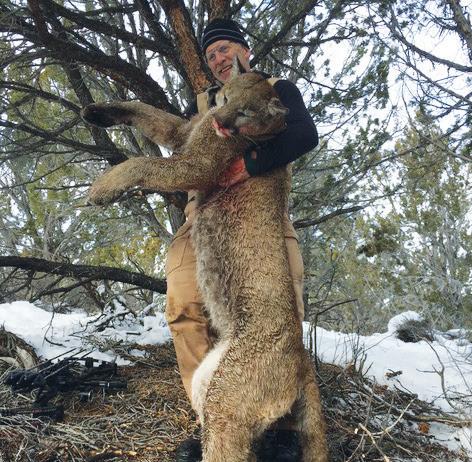
3 minute read
IT’S ABOUT SHOT PLACEMENT
from Arrow May 2023
by mnarchery
By Don Primley
Bull Elk Story:
Advertisement
I have archery hunted elk in Montana,Idaho,Colorado and New Mexico. This bull was taken in northern New Mexico. I was hunting with the best archery elk hunter I have ever hunted with Joe Giglia creator and founder of the ELK BROS BLU COLLAR ELK HUNTING PODCAST. He has harvested over 40 bull elk with his bow and he can speak the language.!! He is a friend and a mentor. A true coach!!
I have started dozens of facial gun shot wound lectures with that question comparing high velocity vs low velocity weapons. I have also started hunter safety archery presentations with a 30-30 lever action rifle and a Hoyt compound bow asking the attendees which was more deadly. Invariably the answer was high velocity and the 30-30 rifle respectively. Setting up the answer: WRONG!
They are all just as deadly as the other. IT IS SHOT PLACEMENT!! Yes, the high velocity round will cause more hydrostatic shock and cavitation damage. Hydrostatic shock is the concept that a penetrating projectile (ie. bullet) can produce a pressure wave that causes remote damage to tissue and organs. Even an arrow causes shock pressure when an arrow’s kinetic energy is converted into a lethal fluid pressure wave inside an animal. According to the FBI, you would be much more likely to die after being hit by a broadhead-tipped arrow than from a single pistol bullet. SAFETY FIRST!!
I have treated multiple gun shot wounded humans and not all of them survive, however most of them did. On the other hand I have shot multiple bull moose, bull elk, bears, caribou, mule deer, whitetails, hogs, turkeys and a mountain lion with one broadhead-tipped arrow. IT IS SHOT PLACEMENT!!

With an arrow placed in the vitals, shock and organ failure are the causes of rapid death. If a broadhead-tipped arrow disrupts the respiratory or circulatory systems with either direct penetration of the heart, both lungs, or a combination, it will cause rapid death. An errant or poorly executed shot severing major vessels such as the carotid or femoral vascular bundles will disrupt the circulatory system and lead to a greater tracking effort but likely death of the targeted animal. However, when only one lung is deflated the respiratory system is affected, but the animal will most likely survive. If one lung and the liver have been penetrated by a broadheadtipped arrow, it will likely cause death at a much slower time table. As we all know, a much longer time is required to allow the animal to die and therefore a delay in tracking on set.
Blood loss leads to hemorrhagic shock and the animal needs to lose enough blood either inside the body or outside of the body, leading to organ failure. Organ failure and death can be very quick or it may take hours, depending on shot placement.
That is why as hunters we practice. We owe it to our intended quarry to practice all year long, not just the two weeks before the season opener. TWO HOLES is the goal through both lungs to disrupt the respiratory system. Loss of blood and therefore oxygen to the brain or bilateral collapsed lungs is organ failure and will usually result in seeing the targeted animal falling in sight.
Not all archers are hunters and I love that about our sport. Dedication to shot placement is just as important to target archers as it is to those of you who do hunt. It’s not just the bullseye it is the X !!. Just as the hunter shoots to the exit to achieve the two holes through the vitals, it is the X count for the target archer.
The common denominator is dedicated practice. Join an archery club, join a league for winter shooting, support your local archery pro shops for shooting instruction to improve your abilities. If you think that you don’t need to practice think again. The more Xs you shoot the more fun you will have and the more meat you will put in the freezer.
Mountain Lion Story:
Hound hunting in Nevada, we hunted this particular lion for several days until we cut a fresh track and then the six mile pursuit began through the Nevada mountains. Prehunt practice for weeks included pulling a target up 20 feet into a tree and shooting at an orange target spot from various distances and positions. the meat was excellent to eat. I don’t shoot anything I don’t eat.
Don Primley Bio:
Born in GreenBay Wisconsin and raised in Hayward WI.
I began my hunting adventures at the age of 3 y/o while “archery road hunting” in northern Wisconsin. My grandfather relates the story that I howled that the deer were going to eat my daddy. I was very fortunate to have archery hunted with both my grandparents and my mother and father. At the age of 12 my grandmother, who was hunting the same field, told me that I would never shoot a deer the way I was slapping mosquitoes.
The years and adventures piled up. It has always been about the adventures for me. Experience has been a great teacher and I have learned that my windmill of opportunity spinsfaster when I am in the game. Practice, scouting, field work, climbing mountains, observing and listening to the animals in the off season that I will pursue in season. Having great mentors to learn from and then pass on the knowledge. THAT IS OUR LEGACY !!





